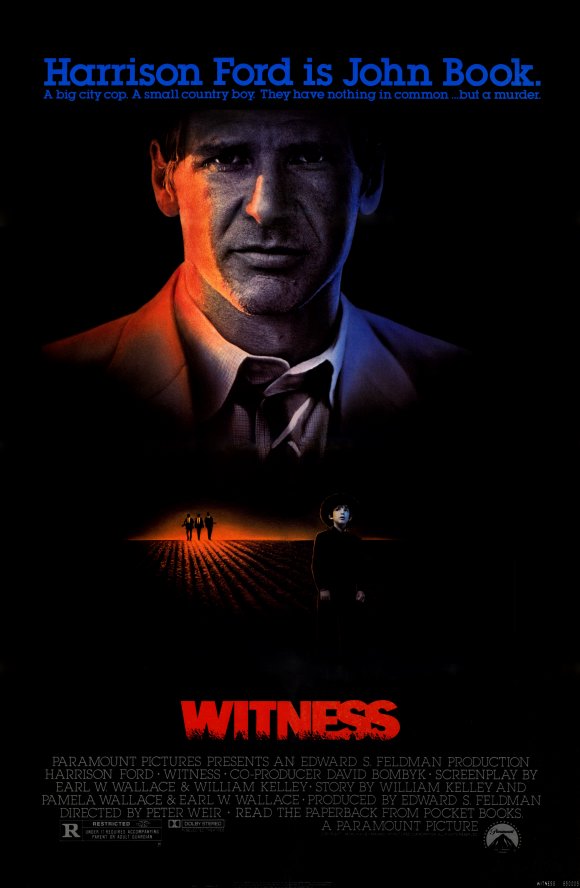Peter Weir makes it seem super easy in Witness. Everything, from communicating just what kind of detective Harrison Ford’s John Book is to establishing the (admittedly simple) good cop vs. bad cop plot, is done with such economy that it can easily be taken for granted. Weir also knows when to rachet the tempo up. Book and Kelly McGillis’s Rachel fall in love slowly, gracefully, their feelings accumulating over time, so that when they finally embrace it causes an explosion of passion on screen (it helps that Ford is one of the best looking leading men in cinematic history). The final showdown works much in the same way, only with shotguns instead.
But it’s John Seale’s camera work that sets this film apart. His compositions, like Weir’s direction, are the result of a light touch. Door frames, windshields, exposed beams in a simple Amish kitchen—Seale uses the shapes created by these unassuming items to frame his figures in a way that makes it seem like that’s what the items were designed for in the first place. He opts for intense close ups whenever he can, as Ford and McGillis’s performances verge into nonverbal territory often. Seale excels at capturing the nearly imperceptible gestures and stolen glances that seem small onscreen but in fact do a great deal of heavy lifting for plot and performance alike.
“Capturing” is the operative word. In many scenes, especially those that examine the day to day life of the Pennsylvania Amish, Seale exhibits the skills of a documentarian, his eye focused on his subjects without bias nor judgment.
